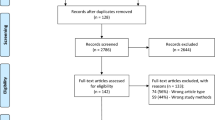Abstract
Type I medialization thyroplasty (MT) was introduced by Isshiki more than 40 years ago. It is one of the most widely used surgical options to correct glottic insufficiency. Intraoperatively, the surgeon relies solely on perceptual subjective measures to help to achieve an optimal glottic closure by bringing the affected vocal fold closer to the midline in order to close the glottic gap. One of the challenges of MT is the persistence of symptoms due to incorrect choice of implant size. As of now, no standard objective measure is being used to determine the optimal implant size needed to achieve the glottic closure required. Peak direct subglottic pressure (PDSGP) is one of the aerodynamic objective measurements of vocal efficiency that significantly increases in cases of glottic insufficiency. It is easily measured during MT by inserting a catheter through the cricothyroid membrane. A prospective study was carried out on patients undergoing MT using the Montgomery Implant®. Choice of implant size was carried out based on the standard perceptual subjective assessment by the operating surgeon and was based on degree of glottic closure and voice quality. PDSGP was recorded for each implant size and then we tested the agreement between the chosen implant size and the lowest PDSGP. The agreement between the implant size of choice and the lowest PDSGP recorded was 62.5 % [CI 44–79 %]. PDSGP was easy to measure and resulted in no complications. PDSGP is a useful tool that could assist in the choice of the correct implant size needed during MT.
Level of evidence: 4.

Similar content being viewed by others
References
Remacle M, Lawson G (2007) Results with collagen injection into the vocal folds for medialization. Curr Opin Otolaryngol Head Neck Surg 15(3):148–152
Rosen CA, Gartner-Schmidt J, Casiano R, Anderson TD, Johnson F, Reussner L, Remacle M et al (2007) Vocal fold augmentation with calcium hydroxylapatite (CaHA). Otolaryngol Head Neck Surg 136(2):198–204
Isshiki N, Morita H, Okamura H, Hiramoto M (1974) Thyroplasty as a new phonosurgical technique. Acta Otolaryngol 78(1–6):451–457
Montgomery WW, Blaugrund SM, Varvares MA (1993) Thyroplasty: a new approach. Annals Otol Rhinol Laryngol 102(8):571–579
Isshiki N, Tanabe M, Sawada M (1978) Arytenoid adduction for unilateral vocal cord paralysis. Arch Otolaryngol 104(10):555–558
Tucker HM (1989) Long-term results of nerve-muscle pedicle reinnervation for laryngeal paralysis. Annals Otol Rhinol Laryngol 98(9):674–676
Omori K, Slavit DH, Kacker A, Blaugrund SM, Kojima H (2000) Effects of thyroplasty type I on vocal fold vibration. Laryngoscope 110(7):1086–1091
Giovanni A, Gras R, Grini MN, Robert D, Vallicioni JM, Triglia JM (1997) Médialisation d’une corde vocale paralysée par implant de polytétrafluoroéthylène expansé (Gore-Tex®). In: Annales d’oto-laryngologie et de chirurgie cervico-faciale, vol 114, no. 5. Elsevier Masson, pp 158–164
Netterville JL, Stone RE, Civantos FJ, Luken ES, Ossoff RH (1993) Silastic medialization and arytenoid adduction: the Vanderbilt experience a review of 116 phonosurgical procedures. Annals Otol Rhinol Laryngol 102(6):413–424
Lundeberg MR, Flint PW, Purcell LL, McMurray JS, Cummings CW (2011) Revision medialization thyroplasty with hydroxylapatite implants. Laryngoscope 121(5):999–1002
Inagi K, Khidr AA, Ford CN, Bless DM, Heisey DM (1997) Correlation between vocal functions and glottal measurements in patients with unilateral vocal fold paralysis. Laryngoscope 107(6):782–791
Lundy DS, Casiano RR, Xue JW (2004) Can maximum phonation time predict voice outcome after thyroplasty type I? Laryngoscope 114(8):1447–1454
Dejonckere PH (2010) Assessment of voice and respiratory function. Surgery of larynx and trache. Springer, Berlin, pp 11–26
Matar N, Remacle M, Bachy V, Lawson G, Giovanni A, Lejoly-Devuyst V, Legou T (2012) Objective measurement of real time subglottic pressure during medialization thyroplasty: a feasibility study. Eur Arch Otorhinolaryngol 269(4):1171–1175
Cummings CW, Purcell LL, Flint PW (1993) Hydroxylapatite laryngeal implants for medialization preliminary report. Annals Otol Rhinol Laryngol 102(11):843–851
Mastronikolis NS, Remacle M, Kiagiadaki D, Lawson G, Bachy V, Van Der Vorst S (2013) Medialization thyroplasty for voice restoration after transoral cordectomy. Eur Arch Otorhinolaryngol 270(7):2071–2078
Woo P, Pearl AW, Hsiung M-W, Som P (2001) Failed medialization laryngoplasty: management by revision surgery. Otolaryngol Head Neck Surg 124(6):615–621
Hoffman MR, Witt RE, McCulloch TM, Jiang JJ (2011) Preliminary investigation of adjustable balloon implant for type I thyroplasty. Laryngoscope 121(4):793–800
Zapater E, García-Lliberós A, López I, Moreno R, Basterra J (2014) A new device to improve the location of a montgomery thyroplasty prosthesis. Laryngoscope 124(7):1659–1662
Giovanni A, Demolin D, Heim C, Triglia J-M (2000) Estimated subglottic pressure in normal and dysphonic subjects. Annals Otol Rhinol Laryngol 109(5):500–504
Ketelslagers K, De Bodt MS, Wuyts FL, Van de Heyning P (2007) Relevance of subglottic pressure in normal and dysphonic subjects. Eur Arch Otorhinolaryngol 264(5):519–523
Le Huche F, Allali A (1990) La voix, pathologies vocales. Masson, Paris
Author information
Authors and Affiliations
Corresponding author
Ethics declarations
Conflict of interest
No potential conflicts of interest.
All research involving human participants was subject to ethics committee review by the Hospital Ethics Committee and Review Board and deemed to be compliant.
Informed consent was obtained by all patients in the study.
Rights and permissions
About this article
Cite this article
Almohizea, M.I., Prasad, V.M.N., Fakhoury, R. et al. Using peak direct subglottic pressure level as an objective measure during medialization thyroplasty: a prospective study. Eur Arch Otorhinolaryngol 273, 2607–2611 (2016). https://doi.org/10.1007/s00405-016-4059-5
Received:
Accepted:
Published:
Issue Date:
DOI: https://doi.org/10.1007/s00405-016-4059-5




